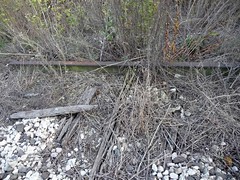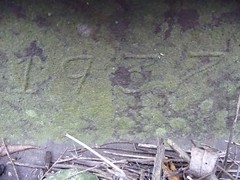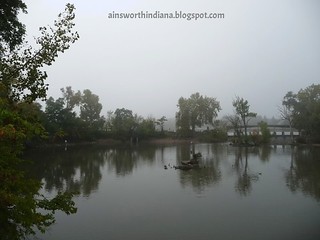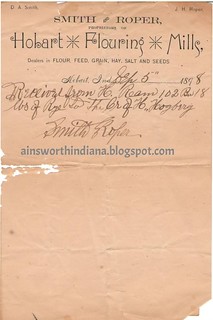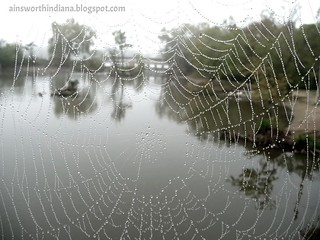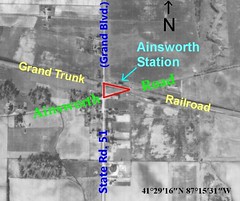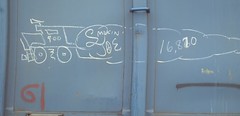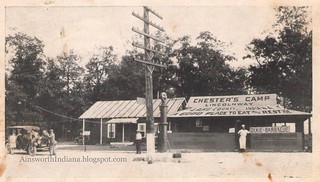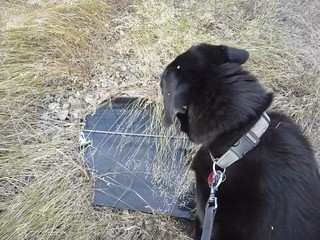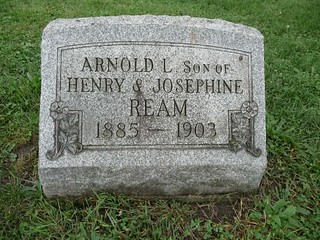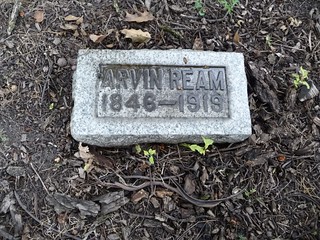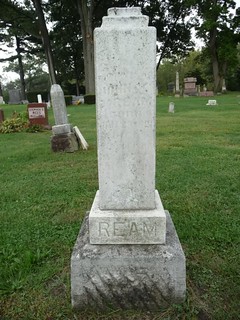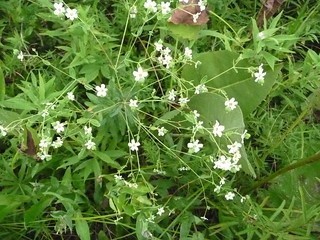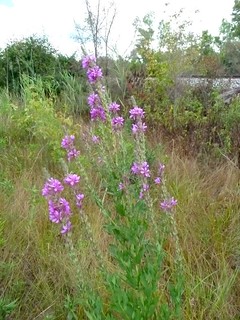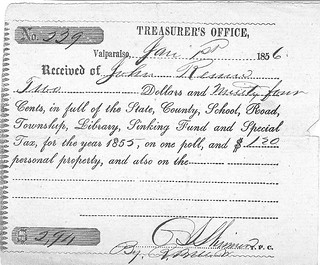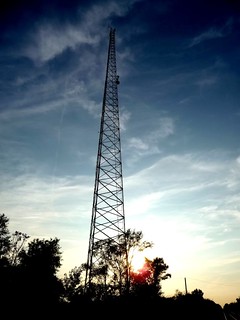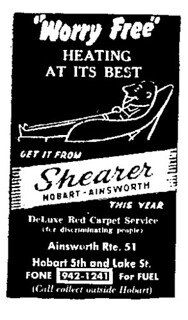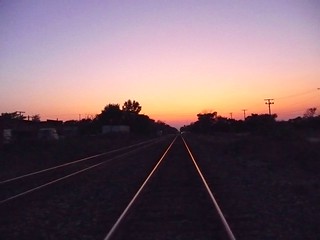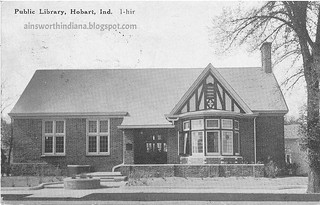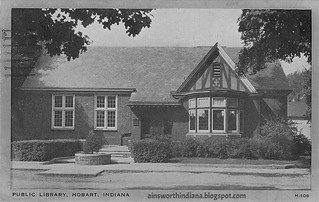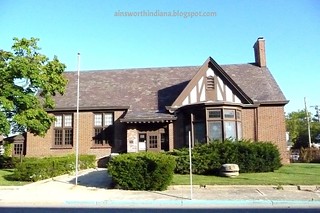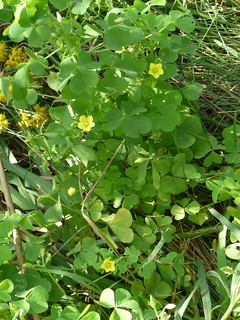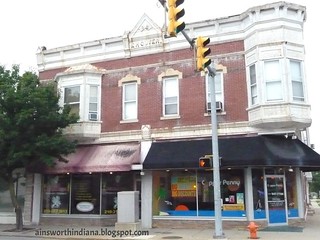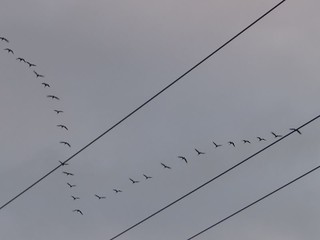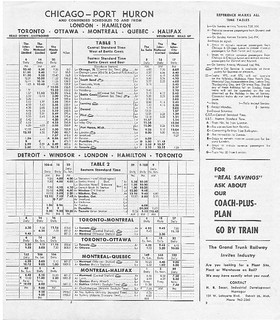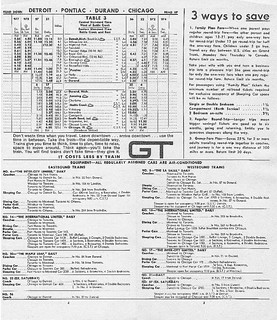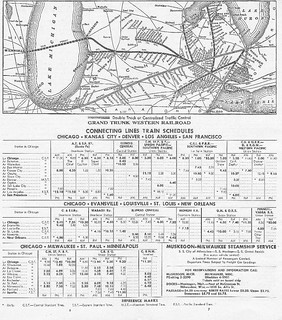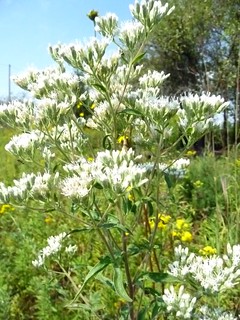CHESTERTON. March 14.—Funeral services for Mrs. Ella Mae Chester, 38, of Tremont, who died Friday at midnight in Clinic hospital, were held Monday afternoon. ... Surviving is her husband. John Chester, and five step-children, the youngest daughter, 13, being at home.
The Chesters have been proprietors for the past four years of the Chester Camp east of Tremont on U. S. 12. They formerly operated a camp on the old Lincoln highway, about four miles west of Valparaiso. [Vidette-Messenger (Valparaiso, Ind.), Mar. 14, 1939.]* * *
John Chester, age 54, operator of Chester's camp, tourist station on U. S. 12, one-half mile east of Tremont, attempted suicide this morning by shooting himself in the head with an automatic pistol.
The shooting occurred at 9:10 o'clock, and resulted from despondency resulting from the death of his second wife, Goldie, two months ago. Friends said he had threatened to kill himself on several occasions.
A daughter, Betty Lou, age 13, only one of five children who lives at home, had just left for school and a tourist in one of the cabins discovered Chester after the shooting.
Chester was rushed to Clinic hospital. Michigan City, by State Policemen Walter LaHayne and Arthur Keller, who were called. Hospital attaches report his condition as critical with small chances for recovery. The bullet entered the head behind the right ear.
Chester is well known by many Valparaiso people, having operated a camp on Lincoln Highway, eight miles west of Valparaiso, for a number of years before locating on the Dunes four years ago. [Vidette-Messenger (Valparaiso, Ind.), Apr. 12, 1939.]* * *
MICHIGAN CITY, April 14. — (Special) — John Chester, 50, Chesterton tourist camp operator found shot through the head Wednesday, remained unconscious at Clinic hospital here today. Little hope is held for his recovery. Chester was found in his home. A .22 calibre bullet had passed through his head above the temples. He has operated a tourist camp near Tremont for several years. He formerly operated Chester's Camp at Ainsworth. [Hammond Times (Hammond, Ind.), Apr. 14, 1939.]* * *
Memorial services were held this afternoon at 2 o'clock in Pflughoeft's chapel in Hobart for John J. Chester, age 52, who died Sunday in Clinic hospital, Michigan City, from a bullet wound in the head, self-inflicted, last Wednesday at his home at Tremont, on Dunes highway. Chester was said by relatives to have been depressed since the death of his wife, Goldie.
Surviving are four daughters, Mrs. Mamie Feightner, and Mrs. Daisy Bullock, both of Gary; Miss Marie Chester, of Hobart, and Miss Betty Louis Chester, of Tremont; a son, William, of Hobart; three brothers, Charles and James of Hobart, and Jerome, of LaMoille, Ill., and three sisters, Mrs. Ella Olson, of Fort Wayne; Mrs. Lovisa Nelson and Mrs. Carrie Raschka, both of Hobart. Burial was in Crown Hill cemetery. [Vidette-Messenger (Valparaiso, Ind.), Apr. 18, 1939.]
The First Mrs. Chester
LONG ILLNESS CAUSES DEATH EMMA CHESTER
Mrs. Emma Chester, age 47, died Thursday at her home on Lincoln Highway, near Ainsworth, following an extended illness. She is survived by her husband, John; a son William; four daughters, Mrs. Mamie Fleighner, of Gary; Mrs. Daisy Bullock, of Ainsworth, and Mary and Betty Lou Chester; a sister, Mrs. Louis Weiler, and three brothers, Emil, Albert and Otto Klemm.
Memorial services will be held in Pflughoeft's funeral home in Hobart Monday afternoon at 2 o'clock, following brief rites at the residence at 1 o'clock. Rev. G. H. Hentschel, of Hobart, will officiates. Burial will be in Crown Hill cemetery.
Vidette-Messenger (Valparaiso, Ind.), Apr. 12, 1935.
John and Emma are buried together in the Crown Hill Cemetery.


(Click on images to enlarge)
The second Mrs. Chester lies in Chesterton Cemetery.



